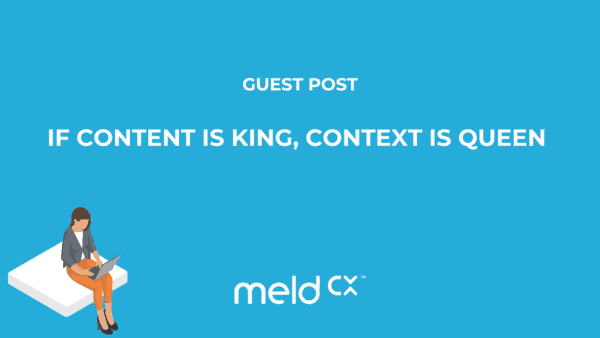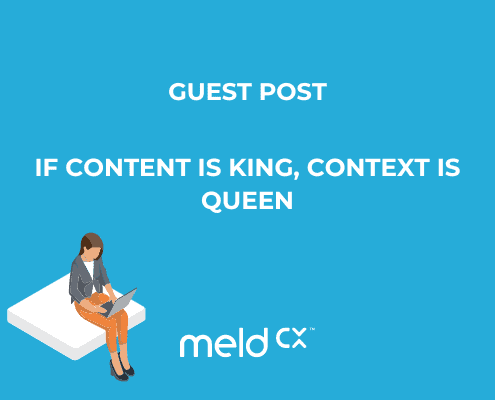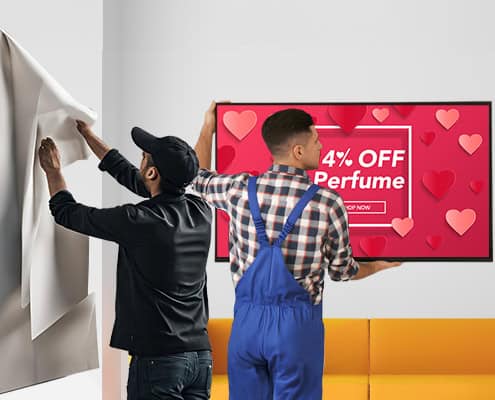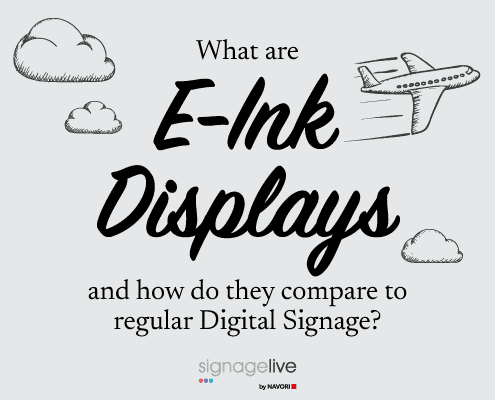
A valued partner of Signagelive, meldCX empowers businesses to create premier customer experiences through AI and intelligent-edge technologies.
meldCX, Executive Vice President of SaaS, Thor Turrecha, is the author of If Content is King, Context is Queen, the fifth article instalment of his Intelligent Content series, which we feature here as a guest post.
When we talk about best practices in Digital Signage content, creativity and messaging are most important in achieving success. But it’s just as important to show content at the right time and the right place to the right audience.
As the saying goes, timing is everything, even for digital content. You don’t want to promote beachwear when it’s pouring outside, or publish a 200-word article on a window display – unless it’s for a social experiment.
Below are some key aspects of a successful content management strategy that work for Digital Signage.
Location, Location, Location
The location where your screen is installed practically determines what it should be showing. Retailers with a tried and tested Digital Signage strategy make use of zones that have clearly-defined purposes.
For instance, the purpose of a storefront is to attract people passing by, so content should be striking, bold and colourful to catch the eye.
Screens at the store entrance should then direct customers, displaying highlights, promotions and informative content about what the store can offer.
Transaction areas are for customers committed to making a purchase. Here, you could entice them to return with a preview of what happens – an exclusive perk or a discount – on their next visit.
All this content must be well-timed and strategically placed, in order to satisfy customers and keep them coming back.
Don’t Drone On
With so many distractions in the world today, the average attention span of humans has gone down to only eight seconds – a goldfish practically has more attention than that.
Content should therefore be short, ideally between 5 to 12 seconds. In areas with high foot traffic, static content should only play for 5 seconds or less.
If your content is animated, the duration should be extended a little. Viewers need additional time to read and process moving content. Longer messages or extra information will also require more time.
To be sure your content works, it’s best to test it with different audiences, and check if they can skim over it three times before it ends.
Repeat 7 Times
You know the feeling you get when you think you’ve seen an ad somewhere before? The chances are that you probably have. You just weren’t paying enough attention.
Studies say that repetition makes recall stronger, even when the audience isn’t actively watching or listening, that’s why your content needs to loop constantly.
For better content recall, your viewers have to be able to see it at least seven times, whether it’s on a single visit or over staggered views. More exposure to content will help them remember, even without conscious effort.
Playlists Aren’t Just For Songs
Make the best use of your digital screens by keeping it up and running with a variety of fresh content. Be sure that all of it is played, and often, through playlists.
You can add content to a playlist and schedule it to play across your entire digital network. But to ensure relevancy, create different playlists and schedule them well. Have a unique playlist for various zones, times of day, seasons, and special events.
Where possible, a playlist should play 7-10 different content at any given time to make it interesting and memorable. Any more than that and it becomes a blur. Any less and it quickly becomes old. Content management systems (CMS), such as Signagelive allow you to do this with ease.
With the cloud-based Signagelive platform, you can remotely create and schedule as many different playlists as you need to one, some or all your network. You have complete control over what content to schedule and when. Content can be distributed in minutes to an infinite number of screens, run on a recurring basis, or scheduled for a certain date and time frame. You can even edit in an active playlist, without having to republish it.
Features, such as tagging streamline the content distribution process. For instance, by tagging – that is, categorising and grouping together Digital Signage players according to region, you can send out the relevant content to multiple different screens in one geographical location, all at the same time.
Nesting is another time-saving feature. To drop in content quickly and ensure consistency across all your messaging, you can embed an entire nested playlist, or specific parts of it – and in any order you like – within a new or existing playlist.
Avoid Going Stale
To make sure your screens don’t become irrelevant, content should be updated regularly.
If you don’t already have a content calendar, then it’s a good idea to set one up, and fill it up with your store’s important and relevant dates.
If you’re a restaurant or in the food industry, you should be able to promote meals based on specific times of day. For retail, banks and real estate, seasonal promotions require seasonal content changes. Schools, universities, libraries and museums also need to post timely, relevant material during the school year.
This means you should be on top of your content calendar, and ensure content is playing when and where it should.
Do Due Diligence
Performing content reviews and audits at least once a month ensure content management success.
Success doesn’t only mean looking forward with what to publish next, but also looking back to see what worked and what didn’t.
Audience feedback is valuable data, and should always be part of your Digital Signage planning and strategy.
Vision AI solutions for Digital Signage allow you to collect viewership and demographics data, in the same way that you’d look at Youtube metrics, but for a physical store.
Viana by MeldCX together with Signagelive offers just such an impactful vision AI-driven solution for Digital Signage, enabling you to display more relevant content, based on anonymous customer analytics. Here’s how it works.
With the help of web triggers, Signagelive can launch specific, tailor-made content for display every time Viana AI-enabled cameras recognise customers and visitors, who match the pre-defined characteristics of your target personas. To understand what content resonates, at what time and for which kind of persona, you just need to access your audience analytics and proof of play reports from the Signagelive platform. Based on the data, you can then switch to the kind of content that works best for your target personas.





You must be logged in to post a comment.